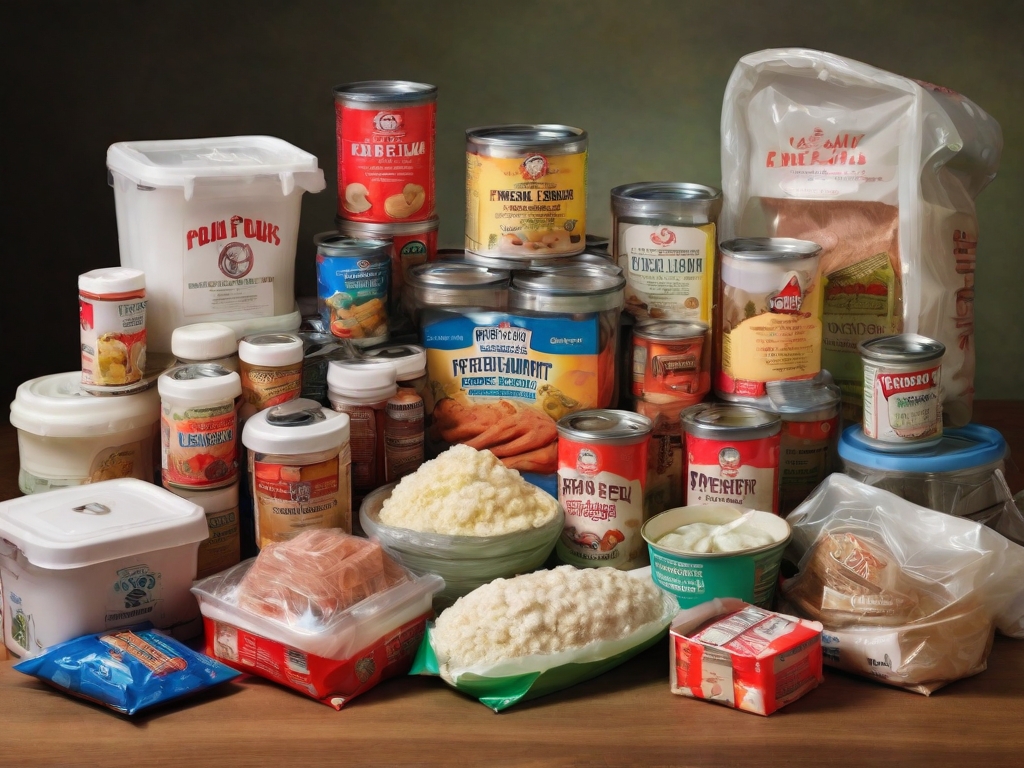List of emergency food supplies for survival

Emergency food supplies
Table of Contents
1. The Importance of Emergency Food Supplies
2. Water: The Essential Survival Supply
3. Non-Perishable Food Items
4. High-Energy Foods
5. Special Dietary Considerations
6. Food Storage and Preservation
7. Tools and Equipment for Food Preparation
8. Rotation and Maintenance of Supplies
9. Conclusion
The Importance of Emergency Food Supplies
When disaster strikes, whether it’s a natural catastrophe, a pandemic, or a man-made event, having a well-stocked emergency food supply can mean the difference between survival and desperation. Being prepared with the right food items can help you and your loved ones stay nourished and healthy during times of crisis. In this article, we’ll explore the essential emergency food supplies you should have on hand to ensure your survival.
Water: The Essential Survival Supply
Water is the most critical component of any emergency food supply. A person can survive for weeks without food, but only a few days without water. It’s essential to store at least one gallon of water per person per day for drinking and sanitation. Here are some tips for water storage:
– Use food-grade water storage containers with tight-fitting lids.
– Store water in a cool, dark place away from direct sunlight and chemicals.
– Replace stored water every six months to ensure freshness.
Non-Perishable Food Items
Non-perishable food items are the backbone of any emergency food supply. These foods have a long shelf life and don’t require refrigeration. Here are some non-perishable food items to consider:
– Canned fruits, vegetables, and meats
– Dried beans, lentils, and peas
– Rice, pasta, and grains
– Powdered milk and shelf-stable dairy alternatives
– Nuts and seeds
High-Energy Foods
In a survival situation, high-energy foods can provide the necessary calories to keep you going. These foods are typically dense in nutrients and calories, making them ideal for emergency situations. Some high-energy foods to include are:
– Peanut butter and other nut butters
– Granola bars and energy bars
– Dried fruits
– Trail mix
– Chocolate and candy (in moderation)
Special Dietary Considerations
When building your emergency food supply, consider any special dietary needs of your family members. This may include:
– Baby food and formula for infants
– Gluten-free or allergy-friendly options
– Low-sodium or heart-healthy choices
– Vegetarian or vegan alternatives
Food Storage and Preservation
Proper food storage and preservation are crucial to maintaining the quality and safety of your emergency food supply. Here are some tips:
– Use airtight containers to protect against pests and moisture.
– Store food in a cool, dry place to extend shelf life.
– Use oxygen absorbers or vacuum sealing for long-term storage.
Tools and Equipment for Food Preparation
Having the right tools and equipment can make food preparation easier during an emergency. Consider including the following items:
– Manual can opener
– Portable stove or camping cookware
– Utensils and dishware
– Fire-starting materials
Rotation and Maintenance of Supplies
Regularly rotating and maintaining your emergency food supply ensures that your items remain fresh and usable. Here’s how to do it:
– Keep an inventory list with expiration dates.
– Use and replace items before they expire.
– Check for signs of spoilage or damage.
Conclusion
Building a comprehensive emergency food supply is a vital step in preparing for the unexpected. By including a variety of non-perishable items, high-energy foods, and considering special dietary needs, you can create a stockpile that will sustain you through any crisis. Remember to store water, maintain your supplies, and have the necessary tools for food preparation. With careful planning and regular maintenance, your emergency food supply will be ready when you need it most.